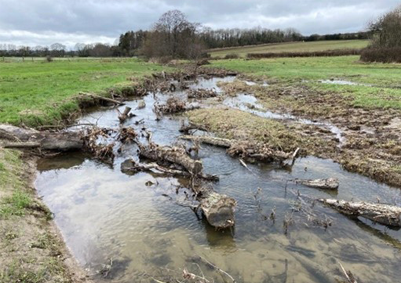A Blueprint for River Restoration and Conservation

The River Axe, a natural wonder of national significance, holds the prestigious title of being both a Special Area of Conservation (SAC) and a Site of Special Scientific Interest (SSSI). This designation is a testament to the exceptional diversity of aquatic and marginal plant species that call the river home, as well as its ability to support several threatened animal species including water crowfoot, salmon, bullhead, and otter (and medicinal leech). Despite centuries of human activity shaping its environment, the River Axe still retains many of its natural geomorphological and important ecological features.
The river ecosystem of the SAC is, however, facing a challenge. First identified in the 1980s, the river is in a declining unfavorable condition due to a combination of biodiversity loss, surrounding soil degradation, silt accumulation within the channel, and nutrient enrichment. There is an overabundance of algae and phosphate, leading to a need for urgent conservation efforts.
Enter the Upper Axe Landscape Partnership Project, a collaborative effort aimed at river restoration across a significant part of the sub-catchment immediately upstream of the River Axe SAC. The project, led by Upper Axe C.I.C., is targeting the restoration of the river ecosystem to its natural wild geomorphic condition, bringing together a diverse group of stakeholders, including farmers and landowners, to create a landscape-scale solution.
The partnership incorporates 32 farms in an almost completely contiguous land area, covering a total of 307km2, with the combined length of the Axe and its tributaries totaling some 59km. The project’s primary focus is on the river channel and the immediate floodplain, recognizing their significance as areas where the most significant interventions are needed. This encompasses a total of 506 hectares. The wider secondary area covers an additional 1,500 2,200 hectares and aims to create bespoke farm management plans that focus on future economic and environmental resilience of each holding, incorporating improved biodiversity and carbon sequestration, as well as a reduction in soil runoff and diffuse river pollution.
The project, with a nature-driven timescale of at least 25 years, has set ambitious yet achievable objectives to restore the river ecosystem. These include restoring natural function to the river and tributaries, restoring spawning gravels in the Upper River Axe, reducing diffuse pollution entering the river system, and creating bespoke farm management plans to future-proof farm businesses while achieving environmental aims.
Highlighting the potential for productive agriculture, the natural environment, and a concerted effort to counter climate change to coexist, the project aims to demonstrate that working alongside farmers and utilizing their knowledge of the land they farm can be part of the solution to biodiversity loss, greenhouse gas emissions, and ultimately climate change.
In addition to river restoration efforts, the project also includes the creation of the Upper Axe river trail, incorporating QR code technology and rambler’s refuges on existing footpaths, an education hub at Magdalen Farm, and a farmer training space at Home Farm, Thorncombe, alongside existing farm and school teaching at Drift Education and Tanyard Farm in Marshwood. There are also initiatives in place for social hedging, Himalayan balsam control, and community engagement through various events and activities.
For those interested in learning more about the project, information can be found on the Upper Axe C.I.C. website, as well as on their Instagram and Facebook pages. Additionally, the MacVet Podcast, focusing on sustainability, sustenance, and salt, offers a platform for in-depth discussions about the project and its impact on the environment and local communities.
The collaborative effort to restore and conserve the River Axe is not only a reflection of the importance of this natural wonder but also a beacon of hope for river conservation and restoration efforts around the world. By bringing together a diverse group of stakeholders and leveraging their collective expertise, the project serves as a blueprint for achieving a harmonious balance between environmental conservation, sustainable agriculture, and community engagement. We know unless we inspire and educate current and future generations about where our food comes from, how we can look after our rivers, our wider environment, and begin to locally provide solutions to the global threat of climate change, the project will not be able to reach its true potential. As the project unfolds over the next two decades, it will undoubtedly leave a lasting legacy, serving as a model for future conservation efforts on rivers and waterways globally.




